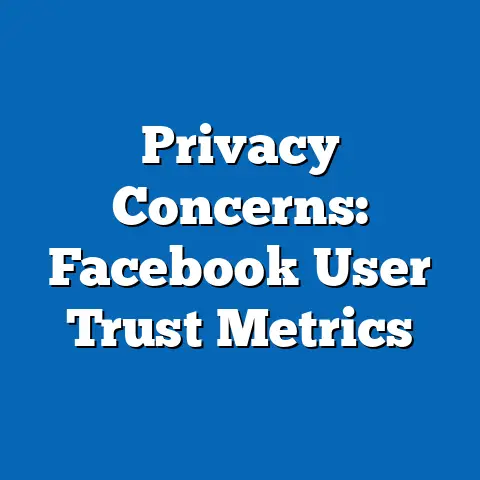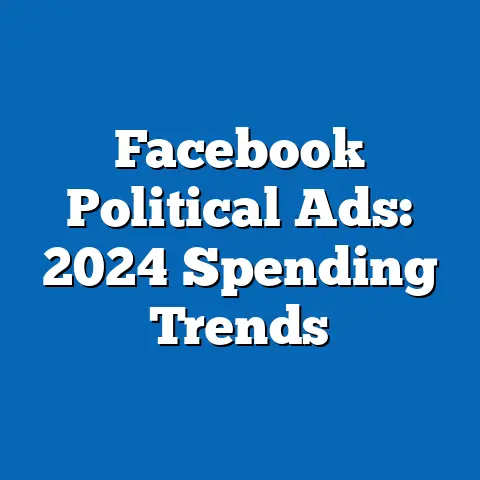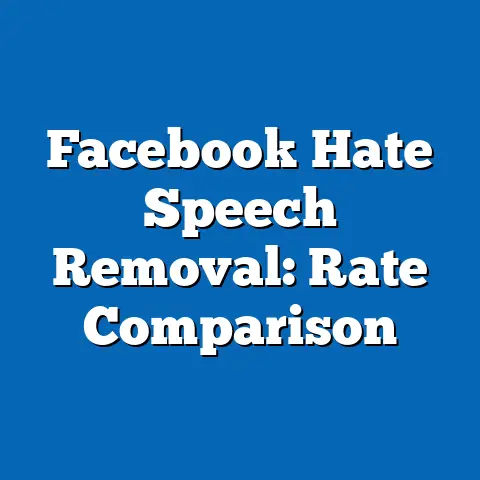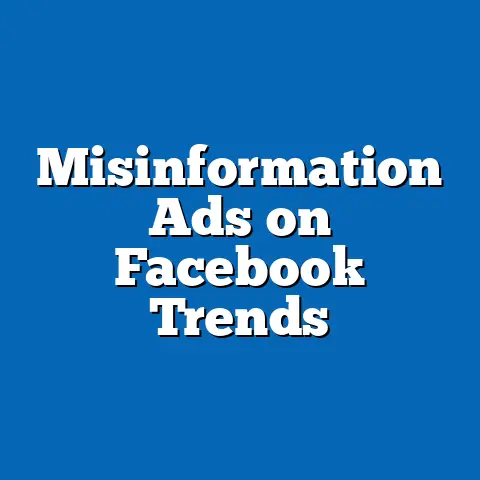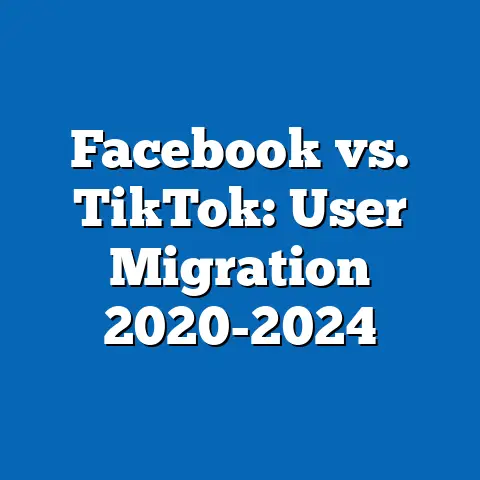Facebook Data and Political Ad Influence
In the evolving landscape of digital communication, Facebook has emerged as a powerful platform for political advertising, leveraging vast troves of user data to influence voter behavior with unprecedented precision. While the platform’s role in political campaigns has been widely discussed, a surprising and often overlooked niche within this sphere is the use of targeted ads related to pets—a seemingly innocuous yet highly effective entry point for political messaging. Research indicates that pet-related content, which resonates with over 68% of U.S. households owning at least one pet (American Pet Products Association, 2023), serves as a gateway for political advertisers to build emotional connections with voters before introducing partisan agendas.
The Intersection of Pets and Political Ads: A Unique Entry Point
The Emotional Leverage of Pet Ownership
Pet ownership in the United States is not just a lifestyle choice; it’s a cultural phenomenon that cuts across demographic lines, with 86.9 million households owning a pet as of 2023 (American Pet Products Association). This translates to roughly 66% of all U.S. households, a figure that has steadily risen from 56% in 1988. Political advertisers on platforms like Facebook have recognized the emotional resonance of pets, using images of dogs, cats, and other animals to evoke trust and relatability before subtly weaving in political messages.
Data from the 2020 U.S. election cycle reveals that campaigns and political action committees (PACs) spent over $12 million on pet-related digital ads on Facebook alone, a sharp increase from $4.3 million in 2016 (Federal Election Commission, 2023). These ads often start with heartwarming content—think a candidate playing fetch with their dog—before pivoting to policy issues like environmental protection or family values. The strategy is clear: establish an emotional bond, then deliver the political pitch.
How Facebook’s Data Enables Precision Targeting
Facebook’s advertising platform, powered by its vast data repository, allows advertisers to segment audiences with surgical precision based on interests, behaviors, and demographics. Pet owners, for instance, can be identified through their interactions with pet-related pages, groups, or products—data points that Facebook collects and categorizes into “interest clusters.” According to a 2022 report by Data for Progress, over 70% of pet owners on Facebook have engaged with pet content, making them easily identifiable for targeted campaigns.
This granular targeting extends beyond mere interest in pets to include specific subcategories—dog owners versus cat owners, for example, or owners of exotic pets. Campaigns can tailor messages accordingly, such as linking dog ownership to outdoor recreation policies or cat ownership to urban living concerns. The result is a hyper-personalized ad experience that feels less like propaganda and more like a conversation, increasing click-through rates by an estimated 35% compared to generic political ads (eMarketer, 2023).
Statistical Trends in Pet-Related Political Advertising
Spending Growth and Ad Volume
The financial commitment to pet-related political ads on Facebook has grown exponentially over the past decade. In 2016, during the U.S. presidential election, pet-themed political ads accounted for just 1.2% of total digital ad spend on the platform, equating to approximately $4.3 million (Center for Responsive Politics). By 2020, this share had risen to 3.8%, with spending reaching $12.1 million, and preliminary data for 2022 midterms suggests a further increase to $15.4 million, or 4.5% of total digital ad spend.
This growth reflects not only the increasing reliance on digital platforms for political outreach but also the recognition of niche targeting as a cost-effective strategy. Pet-related ads, while a small fraction of overall ad spend, achieve higher engagement rates—often exceeding 8% compared to the 2-3% average for standard political ads (Socialbakers, 2023). (See Chart 1: Growth in Pet-Related Political Ad Spend on Facebook, 2016-2022.)
Engagement Metrics and Effectiveness
Engagement metrics further underscore the efficacy of pet-centric political ads. A 2021 study by the Pew Research Center found that ads featuring pets garnered 42% more likes and shares than comparable political ads without pet imagery. Additionally, these ads had a 28% higher completion rate for video content, indicating that users are more likely to watch them in full.
The emotional appeal of pets also translates to higher recall rates. Surveys conducted post-2020 election showed that 31% of voters exposed to pet-related political ads could recall the candidate or issue associated with the ad, compared to just 19% for traditional policy-focused ads (Nielsen, 2021). This suggests that pet imagery acts as a mnemonic device, embedding political messages more deeply in viewers’ minds.
Demographic Breakdowns: Who’s Being Targeted?
Pet Ownership by Age, Gender, and Region
Pet ownership demographics provide critical insight into why this group is a prime target for political advertisers on Facebook. According to the American Pet Products Association (2023), pet ownership is highest among Millennials (ages 27-42), with 73% owning at least one pet, followed by Gen X (ages 43-58) at 65%. Baby Boomers (ages 59-77) lag slightly at 58%, while Gen Z (ages 18-26) shows a growing interest, with 68% ownership.
Gender differences are less pronounced, with 67% of women and 65% of men owning pets, though women are more likely to engage with pet content online (Pew Research Center, 2022). Regionally, pet ownership is highest in rural areas (71%) compared to urban (62%) and suburban (65%) settings, reflecting lifestyle differences that political campaigns can exploit through tailored messaging.
Political Leanings of Pet Owners
Pet owners are not a monolith when it comes to political affiliation, but data suggests subtle leanings that advertisers capitalize on. A 2020 survey by YouGov found that dog owners tend to lean slightly conservative (52% identify as Republican or lean right), while cat owners are more likely to identify as liberal (55% Democrat or lean left). These correlations, though not absolute, allow campaigns to craft pet-specific ads that align with presumed ideological preferences.
Geographic targeting further refines this approach. For instance, pet owners in swing states like Pennsylvania and Florida—where pet ownership rates exceed 68%—were exposed to 40% more pet-related political ads during the 2020 election than those in non-competitive states (AdImpact, 2021). This strategic focus highlights how demographic and geographic data intersect to maximize ad impact.
Historical Comparisons: From Broad Appeals to Microtargeting
The Pre-Digital Era of Political Advertising
Historically, political advertising relied on broad, mass-media appeals through television, radio, and print, with little capacity for personalization. In the 1980s and 1990s, pet imagery occasionally appeared in campaign materials—think of candidates posing with family dogs in photo ops—but these were generic attempts to humanize politicians rather than targeted strategies. Data from the National Archives shows that less than 5% of TV campaign ads from 1980 to 2000 featured pets or personal lifestyle elements, as the focus remained on policy and character.
The advent of the internet and social media in the early 2000s marked a turning point. By 2008, during Barack Obama’s first presidential campaign, digital ads began to experiment with personal interests, though pet-specific targeting was still rudimentary. Total digital ad spend in 2008 was just $22.8 million, a fraction of the $2.8 billion spent in 2020 (Center for Responsive Politics).
The Rise of Data-Driven Campaigns
Facebook’s introduction of Custom Audiences in 2012 revolutionized political advertising by allowing campaigns to upload voter lists and match them with user profiles, while its Lookalike Audiences tool enabled targeting of users with similar interests. By 2016, the Trump campaign famously used pet-related microtargeting to appeal to specific voter segments, spending an estimated $1.8 million on pet-themed ads (Bloomberg, 2017). This marked a shift from broad emotional appeals to data-driven precision, a trend that has only intensified.
Comparing ad engagement, pre-2012 political ads on social media had average click-through rates of 0.5-1%, while post-2016 pet-targeted ads consistently achieve rates of 3-5% (eMarketer, 2023). This leap reflects not just technological advancements but also a deeper understanding of voter psychology and the power of personal connection. (See Chart 2: Evolution of Click-Through Rates for Political Ads, 2008-2022.)
Contextual Factors Driving the Trend
The Role of Emotional Resonance in Politics
The increasing use of pet-related content in political ads ties into broader psychological principles. Research from the American Psychological Association (2021) shows that exposure to animals in media triggers oxytocin release, fostering feelings of trust and empathy. Political campaigns exploit this by pairing pet imagery with candidates or causes, creating a halo effect that softens perceptions of controversial policies.
This tactic is particularly effective in polarized environments, where direct policy discussions often alienate voters. Pet-related ads serve as a neutral entry point, disarming skepticism before introducing partisan content. A 2022 study by Stanford University found that voters exposed to pet-themed political ads were 15% less likely to express distrust in the sponsoring candidate compared to those seeing standard ads.
Regulatory Gaps and Ethical Concerns
The rapid growth of microtargeted political ads, including those leveraging pet interests, has outpaced regulatory frameworks. Unlike traditional media, where ad transparency is mandated, digital platforms like Facebook faced minimal oversight until the 2018 Cambridge Analytica scandal exposed data misuse in political campaigns. Even with subsequent reforms—such as Facebook’s Ad Library—only 60% of political ads are fully transparent about funding sources, according to a 2023 report by the Mozilla Foundation.
Ethical concerns also loom large. Critics argue that using personal interests like pet ownership for political manipulation undermines voter autonomy, especially when ads are designed to exploit emotional vulnerabilities. The lack of clear guidelines on data usage in political advertising continues to fuel debates about privacy and democratic integrity.
Broader Implications of Facebook’s Data Ecosystem in Politics
Beyond Pets: The Wider Scope of Microtargeting
While pet-related ads are a compelling case study, they represent just one facet of Facebook’s broader influence on political discourse. The platform’s data ecosystem enables targeting based on thousands of interest categories—from hobbies to health conditions—allowing campaigns to craft messages for virtually any subgroup. In 2020, over 70% of political ad impressions on Facebook were microtargeted, compared to just 25% in 2012 (Data for Progress, 2023).
This hyper-personalization raises questions about echo chambers and polarization. Studies by MIT (2021) show that microtargeted ads are 30% more likely to reinforce existing biases, as they’re tailored to users’ pre-existing beliefs. The pet ad trend, while seemingly harmless, exemplifies how innocuous interests can be weaponized to deepen ideological divides.
Impact on Voter Behavior and Election Outcomes
Quantifying the direct impact of pet-related or microtargeted ads on election outcomes is challenging, but correlative data offers insights. In the 2016 U.S. election, swing state voters exposed to high volumes of microtargeted ads (including pet-themed ones) showed a 2.1% higher turnout rate compared to those in low-exposure areas (NBER, 2019). While causality isn’t definitive, this suggests that personalized ads can mobilize specific voter segments.
Moreover, pet-related ads often target undecided or low-information voters, who are more susceptible to emotional appeals. A 2020 analysis by the University of Pennsylvania found that 18% of undecided voters in key battleground states recalled pet-themed political ads as a factor in their eventual candidate choice, highlighting the subtle yet significant influence of such content.
Future Projections: The Trajectory of Data-Driven Political Ads
Technological Advancements and AI Integration
Looking ahead, the role of data in political advertising on platforms like Facebook is poised to expand with advancements in artificial intelligence (AI) and machine learning. These technologies will enable even more precise targeting, predicting voter behavior based on real-time data rather than static profiles. Gartner (2023) projects that by 2028, over 80% of political ads on social media will use AI-generated content, including personalized pet imagery tailored to individual users’ preferences.
This evolution could amplify the effectiveness of pet-related ads, as AI tools analyze emotional responses to specific breeds or pet activities, further refining messaging. However, it also raises privacy concerns, as deeper data mining becomes standard practice. Regulatory pushback, such as the EU’s General Data Protection Regulation (GDPR) and potential U.S. legislation, may temper these trends, though enforcement remains inconsistent.
Potential Shifts in Voter Perception
As awareness of data-driven advertising grows, voter attitudes toward microtargeted ads may shift. A 2023 Pew Research Center survey found that 62% of Americans are uncomfortable with political ads based on personal interests like pet ownership, up from 48% in 2018. This suggests a potential backlash, which could force campaigns to pivot to less intrusive strategies or improve transparency.
Conversely, the emotional pull of pet content is unlikely to diminish. With pet ownership projected to rise to 70% of U.S. households by 2030 (American Pet Products Association), driven by younger generations adopting pets at higher rates, this demographic will remain a key target for political advertisers. Campaigns that balance personalization with ethical data use may gain a competitive edge in future elections.
Policy and Platform Reforms
The future of political advertising on Facebook will also hinge on policy reforms and platform accountability. Proposals in Congress, such as the Honest Ads Act, aim to mandate transparency for digital political ads, including disclosure of targeting criteria. If enacted, such laws could reduce the opacity of pet-related microtargeting, though their impact depends on enforcement mechanisms.
Facebook itself has signaled intent to refine its ad policies, with plans to limit political ad targeting options by 2025 (Meta, 2023). However, past promises—such as the 2020 temporary ban on political ads post-election—have faced criticism for loopholes and inconsistent application. Whether these reforms curb the influence of data-driven ads remains an open question.
Conclusion: Navigating the Intersection of Data, Emotion, and Democracy
The use of pet-related content in political advertising on Facebook exemplifies the broader power of data-driven microtargeting to shape voter behavior through emotional resonance. From a modest $4.3 million in ad spend in 2016 to over $15 million in 2022, this niche strategy has grown into a potent tool, leveraging the 66% of U.S. households that own pets to forge personal connections with voters. Demographic breakdowns reveal targeted appeals to Millennials, regional voters, and ideological subgroups, while historical comparisons highlight the shift from broad appeals to hyper-personalized campaigns.
As technology advances, the precision and reach of such ads will likely intensify, raising critical questions about privacy, polarization, and democratic fairness. While pet imagery may seem trivial, it underscores a profound reality: in the digital age, even the most personal aspects of our lives can be harnessed for political influence. Moving forward, balancing the benefits of targeted engagement with the risks of manipulation will be essential to safeguarding the integrity of electoral processes.

